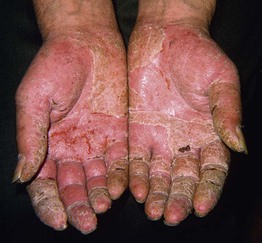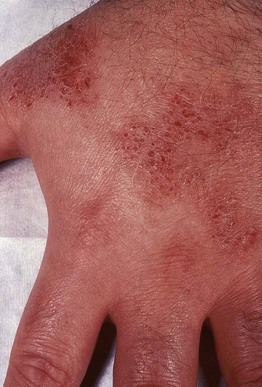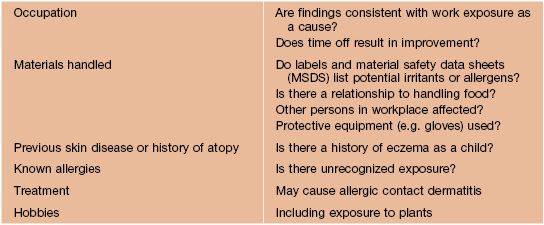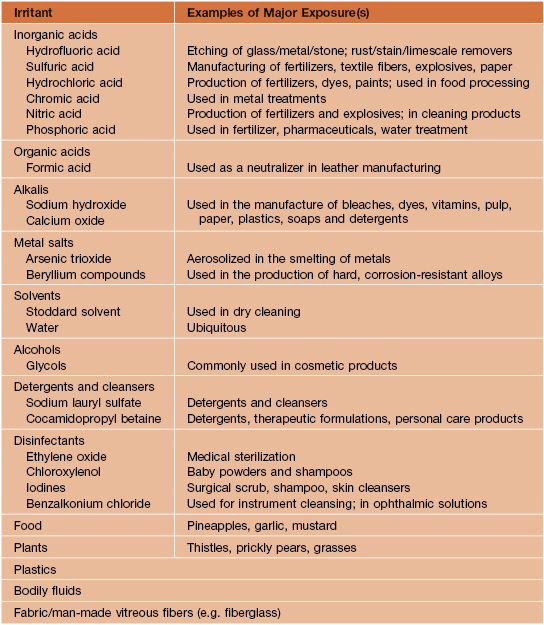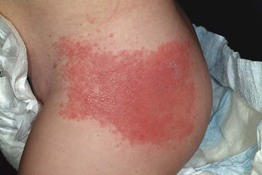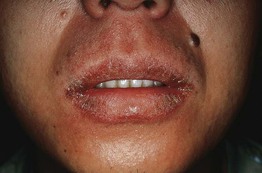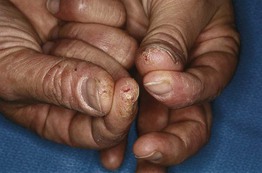12
Irritant and Allergic Contact Dermatitis, Occupational Dermatoses, and Dermatoses Due to Plants
Key Points
• Irritant contact dermatitis (ICD).
– Accounts for 80% of all causes of contact dermatitis.
– Secondary to a local toxic effect caused by a topical substance or physical insult.
• Allergic contact dermatitis (ACD).
– Compared to ICD, more commonly presents with pruritus during the acute phase.
• One of the most common occupational dermatoses is ICD.
Irritant Contact Dermatitis
• Localized, non-immunologically mediated cutaneous inflammatory reaction (Figs. 12.1–12.4).
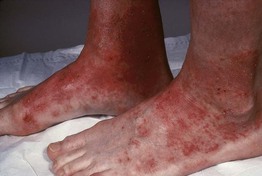
Fig. 12.1 Bilateral irritant contact dermatitis of the feet and ankles due to chronic occlusive footwear. Courtesy, David Cohen, MD.
• Secondary to a direct toxic effect.
• Commonly affects the hands (see Fig. 13.1); Table 12.1 reviews pertinent questions for when environmental exposures are suspected.
• A common cause of cheilitis (lip-licking; see Fig. 13.4).
• May be secondary to an occupational exposure (Table 12.2).
– Common causes are soaps and wet work, and less often petroleum products, cutting oils, and coolants.
Allergic Contact Dermatitis
• In contrast to ICD, more commonly presents with pruritus during the acute phase; the chronic phase has significant overlap with ICD (Fig. 12.5).
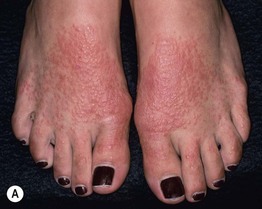
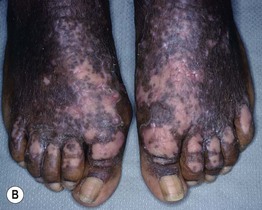
Fig. 12.5 Allergic contact dermatitis to shoes – acute versus chronic. A Extremely pruritic erythematous papules and papulovesicles appeared within days of wearing new sneakers; note the distribution pattern. B Pebbled and lichenified plaques with both hypo- and hyperpigmentation. The patient had a positive patch test to potassium dichromate. Courtesy, Louis A. Fragola, MD.
• Initially, well demarcated and localized to site of contact with the allergen (Figs. 12.5–12.10).
– Acute – in addition to erythema and edema, vesicobullae and weeping may develop (Fig. 12.7).
– Chronic – often lichenified with scale (Figs. 12.5B and 12.9).

Fig. 12.7 Acute allergic contact dermatitis with a prominent component of edema. Obvious edema of the shaft of the penis plus subtle crusts of the glans due to application of tiger balm (contains extracts of several plants, including mint, clove, and Chinese cinnamon). Courtesy, Louis A. Fragola, Jr., MD.

